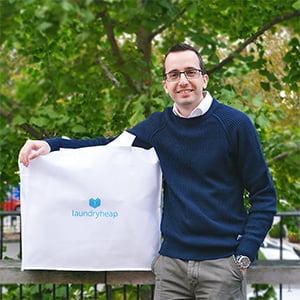It promises rapid growth, increased visibility, and access to resources that can take your business to new heights. However, as the CEO of Laundryheap, I’ve learned the invaluable lesson that building a startup to suit investors can sometimes be a false friend.
We bootstrapped Laundryheap for the first few years, only taking external investment in 2017 when we were established and ready to scale. It’s one of the best business decisions we’ve made and gave me a unique perspective on the value of optimising your business for VCs; and how to spot the investors that ‘get it’.
The potential to sacrifice your vision/purpose for revenue
In the early stages of Laundryheap we faced a crucial crossroad: seek external funding to scale rapidly, or stay true to our vision of building a strong, profitable and robust business. When investors enter the picture, there can be a pressure to show impressive revenue growth and meet specific metrics. While revenue is undoubtedly crucial, solely focusing on the numbers can drive you to make decisions and sacrifices for revenue, at the expense of your longer-term business goals.
Bootstrapping enabled us to maintain a firm grip on our direction for longer. It allowed us to grow sustainably, avoiding compromises that could lead us off track; until such time as our numbers spoke for themselves, and we were ready to bring the right investors on board to help us grow.
The danger of prioritising big metrics over consistent growth
Chasing impressive growth metrics might seem appealing, but it can also lead to unsustainable business practices, inconsistency across different markets, and ultimately rapid cash burn. By bootstrapping, you’re forced to adopt a more measured approach, which can result in consistent and organic growth.
While it may not yield immediate hockey-stick charts, prioritising steady growth builds a strong foundation for the future. Striving for longevity rather than rapid gains ensures your business can weather challenges and continue to thrive, especially in a tough economic climate.
Sometimes, slow and steady really does win the race.
The reality of losing decision-making autonomy
As the founder of Laundryheap, maintaining control over our business’s decisions was of utmost importance to me. When external investors inject money into your startup, they take a stake, so it’s therefore fair that they get a say in how the business is run. This can be amazing: you bring in new perspectives and expertise. But take investment too early, and you’re eroding decision-making power before you’ve had the chance to make lots of your definitive business decisions.
By avoiding early external investment, we steered clear of potential conflicts with investor interests and timelines. This freedom empowered us to innovate, experiment, and pivot whenever necessary, without external pressure pushing us in directions that didn’t align with our long-term goals.
When we did take investment, we had a strong identity and were quickly able to find the investors that understood and valued what we’d built – and were ready to add value where we needed it most. Don’t give away too much before you’re ready.
The power of finding the right investors
VC investment is an invaluable and powerful resource. We would not be where we are without our investors. But the key to a successful VC relationship is to find the right investors and take investment at the right time.
Find the investors that share your vision and can bring expertise to the table that you don’t already have in your team. The right VCs provide more than just funds – they bring valuable insights, guidance, and support. They played a pivotal role in accelerating our growth and expansion into new markets. But before you seek those key players out, make sure you have a strong business with a strong identity. Get clear on your direction and the sacrifices you’re willing to make, so that you can spot the investors who align with your vision.
Share via:








































